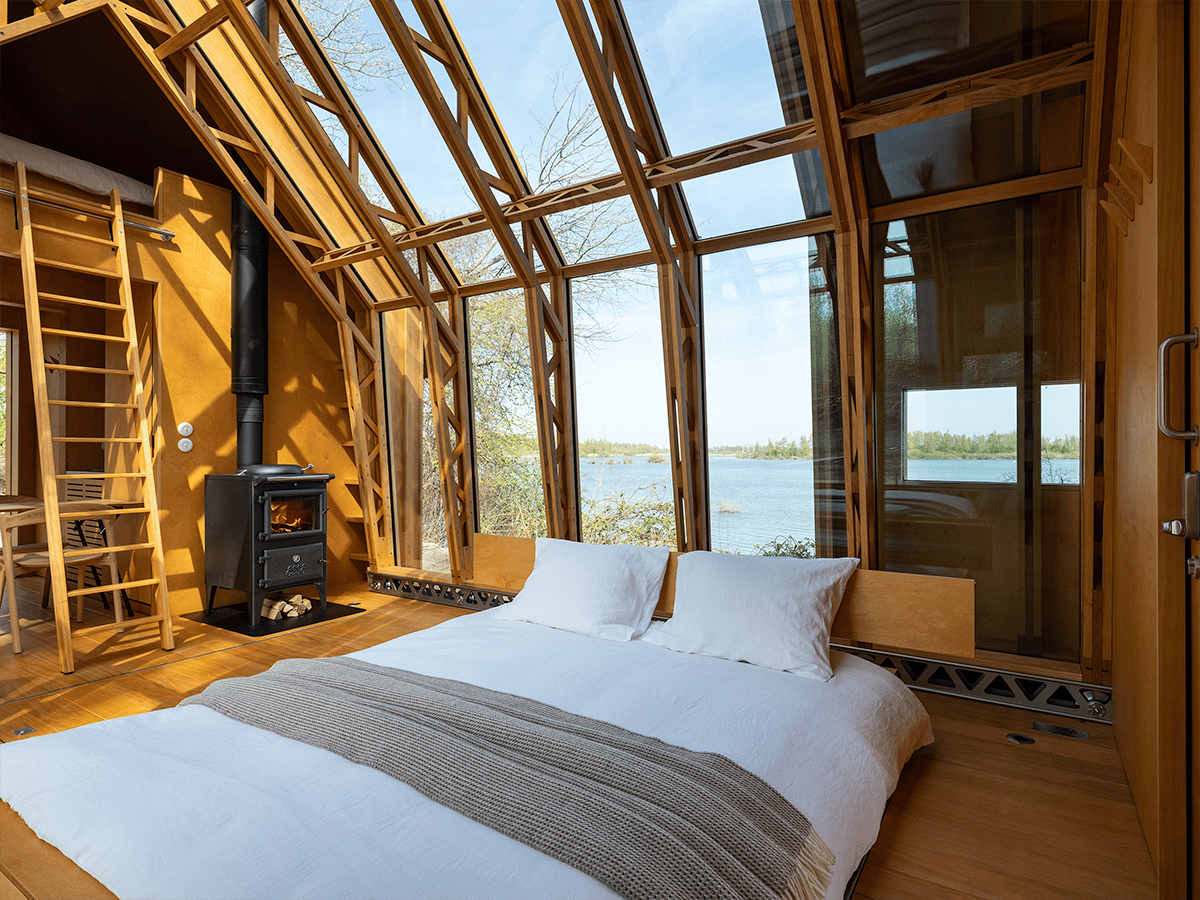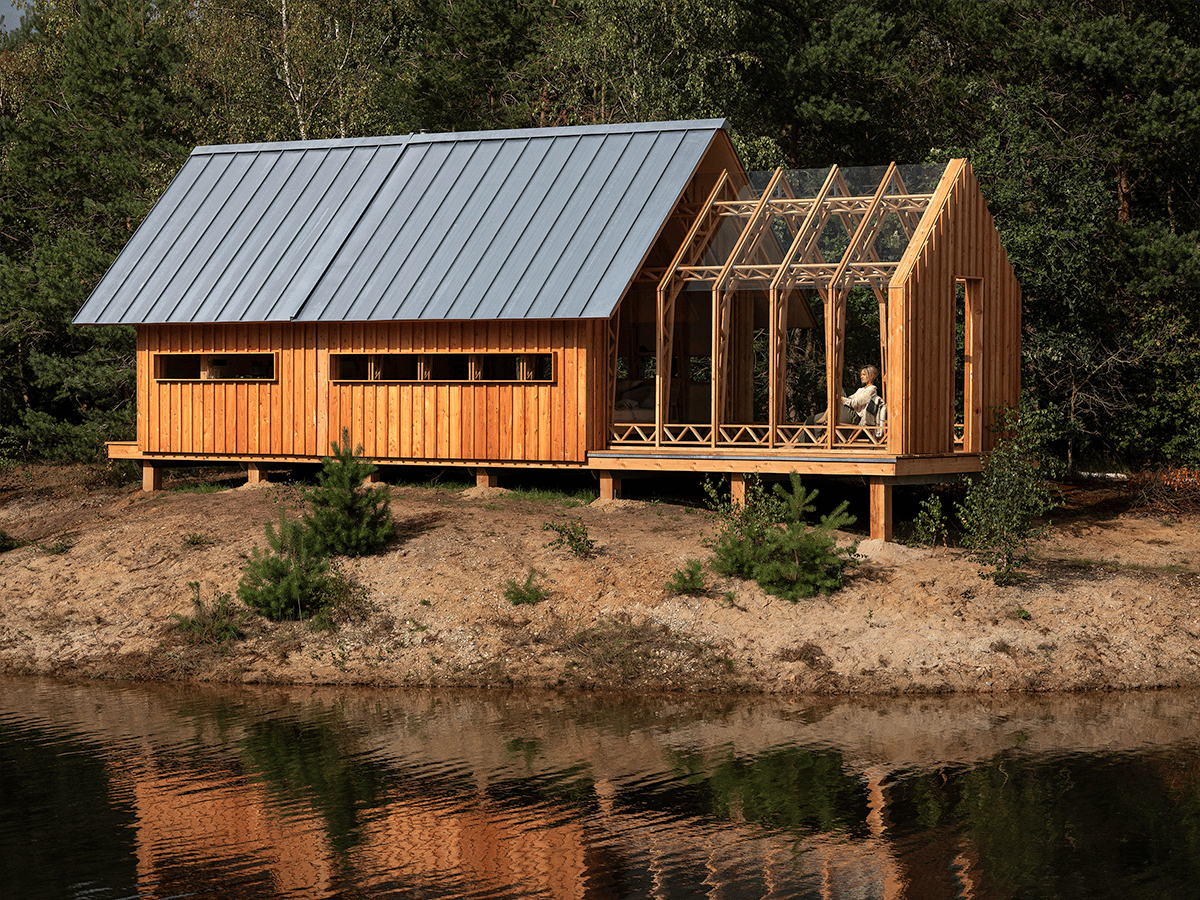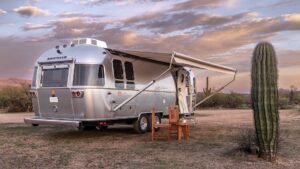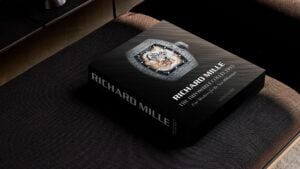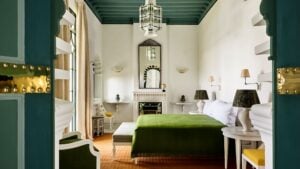Dutch designer Caspar Schols has received top honours at the recent World Architecture Festival, with his versatile ANNA Stay project, a modular sliding cabin conceptually tied to nature, being named World Hotel Building of the Year 2022.
The environmentally friendly sliding cabin, purpose-built to strengthen the connection between nature and humanity, first popped up back in 2020 in the small Dutch hamlet of Hollenberg in Gelderland. Originally conceived as a garden shed with moving walls, the project quickly became a flat-pack cabin for living and working amongst serene natural settings.
ANNA Stay has had no shortage of acclaim since, presenting a fascinating evolution of modular cabin living, the appeal of which is now even stronger after the past few years of the pandemic. Schols took the concept and split it into two categories, the lifestyle-focused ANNA Stay and the slightly tweaked ANNA Meet workplace, designed for productivity.
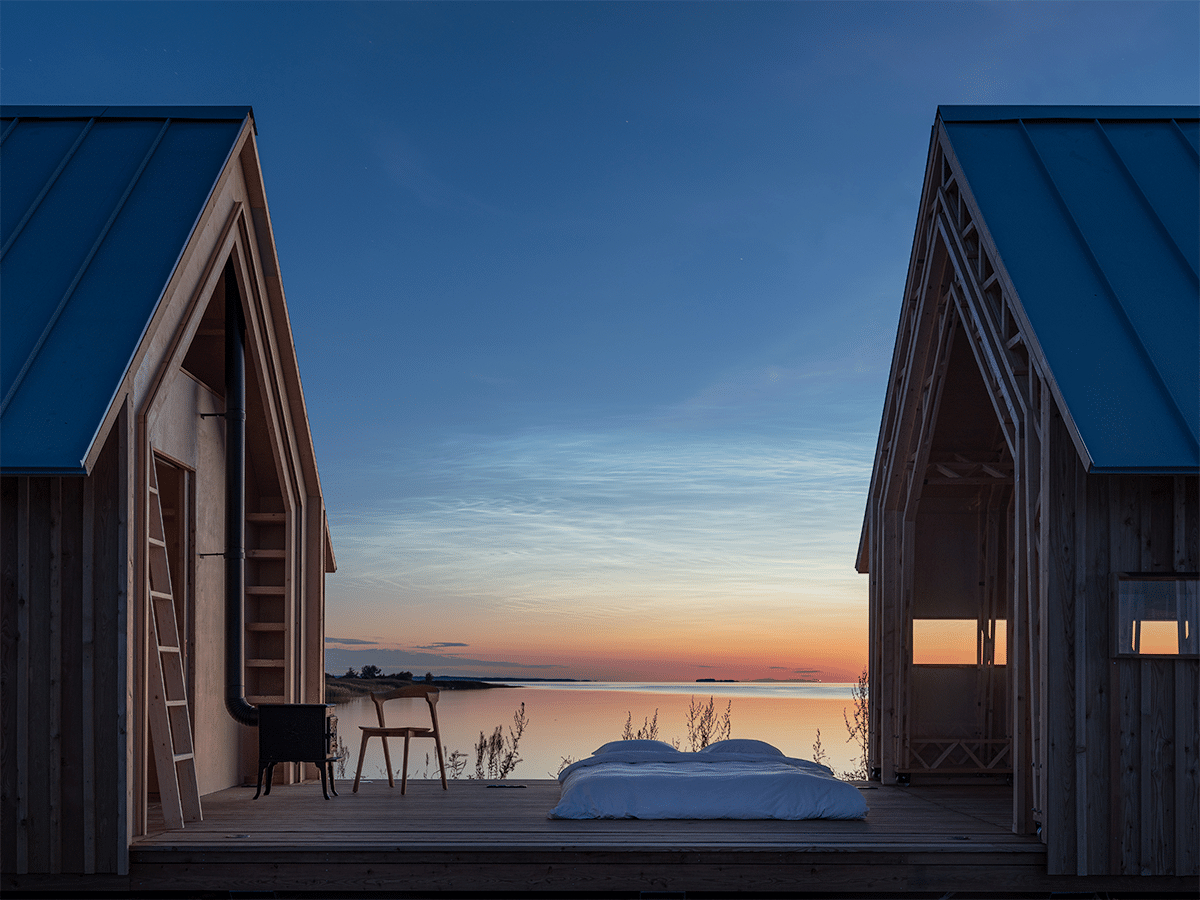
RELATED: This Secluded Cabin In The Forests Of Quebec Is A Low-Slung Modernist Masterpiece
The 4.5-metre tall timber cabin was designed with two shells. One consists of an inner beam and glass structure that is separate from the second shell’s outer walls and the metal roof. Both parts are set on runners so each element can be effortlessly moved (by hand) to create different layouts, completely transforming the living spaces, with both open and closed configurations.
The protective sliding shells move with a seamless mechanism thanks to rubber and aluminium extrusion techniques, included so the cabin can slide smoothly while still protecting from the elements. Inhabitants can quickly and easily slide the cabin around while a glass roof remains in place, pulling in a great deal of natural light. Although when one wants to welcome even more nature into the space, ANNA’s indoor living area can turn into an open-air space in a matter of seconds.
Schols has been quoted before comparing his modular cabin too, of all things, fashion.
“[It’s] just like the way you dress yourself to suit different weather conditions, occasions and moods,” explaining the idea behind ANNA Stay’s biggest selling point.
“This is a sellable, fully inhabitable house, a flat-pack that could be built and re-built anywhere in the world.”
The way Schols has specifically worked ANNA Stay means the cabin has a very short construction time and is future-proofed for a more sustainable future. Around 80% of the parts required to build the cabin can be produced locally using 3D printers and CNC machines, making the design incredibly accessible and showcasing the practical use of these technologies
Although ANNA Stay is most closely associated with The Netherlands, Schols has been developing more sliding cabins for some of the world’s most distinctive natural environments, including Canadian forests and the Sahara Desert.
The first ANNA Stay will be made available commercially sometime this year, capped at just 20 cabins across Europe and the USA. There is not yet any word on why Schols’ ambitious project will be made available for other countries, but we’ll be sure to update this article once we know more.
Cabins are designed for two adults and two children, or three adults. Check out more images below, all via Jorrit T. Hoen.
